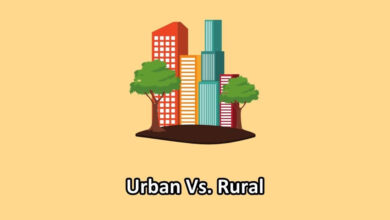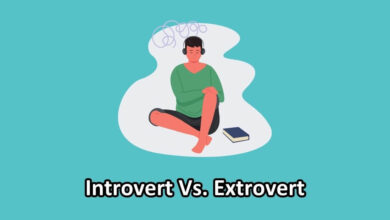Unleash the power of effective communication as we delve into the intriguing question: Oral vs Written Communication – Which is More Effective, and what’s the difference between them? Join us as we explore the key disparity between these two modes of expression. Discover the defining contrast between these dynamic forms of communication and uncover the secrets to maximizing their impact in conveying ideas, thoughts, and emotions.
Oral communication involves the spoken word, allowing for instant interaction and immediate feedback. On the other hand, written communication utilizes the written word to convey messages, providing a permanent record.
Oral Vs Written Communication (Comparison Chart)
| Oral Communication | Written Communication |
|---|---|
| Oral communication is the exchange of information and ideas through spoken words. | Written communication is the exchange of information, ideas, or messages through written language or words. |
| Oral communication primarily takes place face-to-face or over the phone, allowing for real-time interaction, immediate response, and personal connection. | Written communication can be transmitted through various mediums such as email, text messages, letters, or digital platforms |
| Oral communication can be formal or informal and can be used in casual settings such as conversations with friends or family. | Written communication is typically more formal and is commonly used in professional contexts like business letters or reports. |
| In oral communication, speakers can use their tone of voice to emphasize certain points or add nuances to their message. | Written communication lacks the advantage of vocal cues, making it challenging to convey tone. |
| It is more flexible and allows for on-the-fly adjustments based on immediate feedback. | Written communication has less flexibility once the message is written and transmitted. |
| Oral communication tends to be faster as it doesn’t require extensive preparation or writing. | Written communication is generally slower due to the process of composing, editing, and transmitting a written message. |
What is Oral Communication?
Oral communication is the process of communicating using spoken words or vocal expression. It is a type of face-to-face communication in which messages are exchanged between two or more people. Oral communication can be used to convey information, share ideas, give instructions, and make requests.
Some Examples of oral communication include:
– Conversations
– Interviews
– Presentations
– Speeches
– Telephone calls, etc.
What is Written Communication?
Written communication is the process of conveying a message through written or printed words. It can take many forms, including letters, memos, emails, and text messages. Written communication is a vital part of any business or organization, as it allows for the exchange of ideas and information between parties.
Examples of Written communication include:
– Letters
– Memos
– Emails
– Text messages
– Social media posts
– News articles
– Reports
– Press releases, etc.
Pros and Cons of Oral Communication
Pros of Oral Communication:
- Quick Response: Oral communication allows for a quick response between people, allowing for an active dialogue to take place in real-time. This can be useful when making decisions, negotiating agreements, or communicating ideas.
- Personal Touch: Oral communication helps to make conversations more personal and intimate by allowing individuals to express their emotions and feelings more effectively through their tone of voice and body language.
Cons of Oral Communication:
- Forgotten or Misheard Words: Oral communication sometimes might be difficult to remember or misunderstand for many folks, due to the lack of a written record. It is easy for words to be forgotten or misheard, which can lead to confusion and miscommunication.
Pros and Cons of Written Communication
Pros of Written Communication:
- Written communication provides written records that can be used as evidence in the event of a dispute or misunderstanding.
- Written communication allows for precision and clarity, which makes it the best option for conveying complex ideas or instructions.
Cons of Written Communication:
- Written communication can be time-consuming and costly to compose, edit, and distribute.
- Written communication does not allow for direct feedback or dialogue, which could lead to misinterpretation of the message being conveyed.
Key Differences Between Oral and Written Communication
- Formality – Oral communication is often less formal than written communication, as it can be used in informal settings like conversations with friends or family. In contrast, written communication is usually more formal, as it is used in professional contexts like business letters or reports.
- Tone – Oral communication allows for the speaker to convey their tone of voice, which can help to emphasize certain points or create a more emotional response from the listener. This aspect is lost in written communication since there are no vocal cues that can be conveyed through text.
- Nonverbal Cues – Oral communication allows for nonverbal cues such as body language and facial expressions which can add additional layers of meaning and emotion to the conversation. These cues are not typically present in written communication, as they cannot be conveyed through text alone.
- Flexibility – Oral communication allows for greater flexibility since speakers have the ability to adjust their message on the fly based on feedback from their listeners. Written communication, on the other hand, does not offer this same flexibility, since once something
- Medium – Oral communication typically takes place face-to-face or over the phone, while written communication can be transmitted via email, text message, letter, or other digital means.
- Speed – Oral communication is typically faster than written communication, as it does not require the same effort to craft and transmit a message. In contrast, written communication requires more time and effort to create, which can delay the transmission of the message.
Oral Vs Written Communication – Which Is More Effective and Better?
Some people may argue that oral communication is better than written communication because it is more immediate, personal, and efficient. Others may argue that written communication is better than oral communication because it is more permanent, clear, and concise. So, which one is really more effective?
It depends on the situation. If you need to communicate something quickly and have a back-and-forth conversation, oral communication is probably your best bet. If you need to communicate something complicated or important in a way that can be referenced later, written communication is probably your best bet.
Here are some things to consider when deciding which form of communication is best for a given situation:
- How quickly do you need to communicate?
- How important is it that the message be communicated accurately?
- Does the message need to be recorded or referenced later?
- Is the message complex or simple?
- Is the message sensitive or confidential?
- Are you communicating with just one person or multiple people?
Conclusion
So, in conclusion, both oral and written communication have their own benefits when it comes to effectively conveying a message. Depending on the type of content you are trying to share, one might be more suitable than the other.
While oral communication can provide immediacy and direct engagement with an audience, written communication has the benefit of allowing for deeper thought-out messages that can be transmitted over longer distances. Ultimately, it’s important to evaluate your situation before deciding which method is best for communicating your ideas in any given context.



